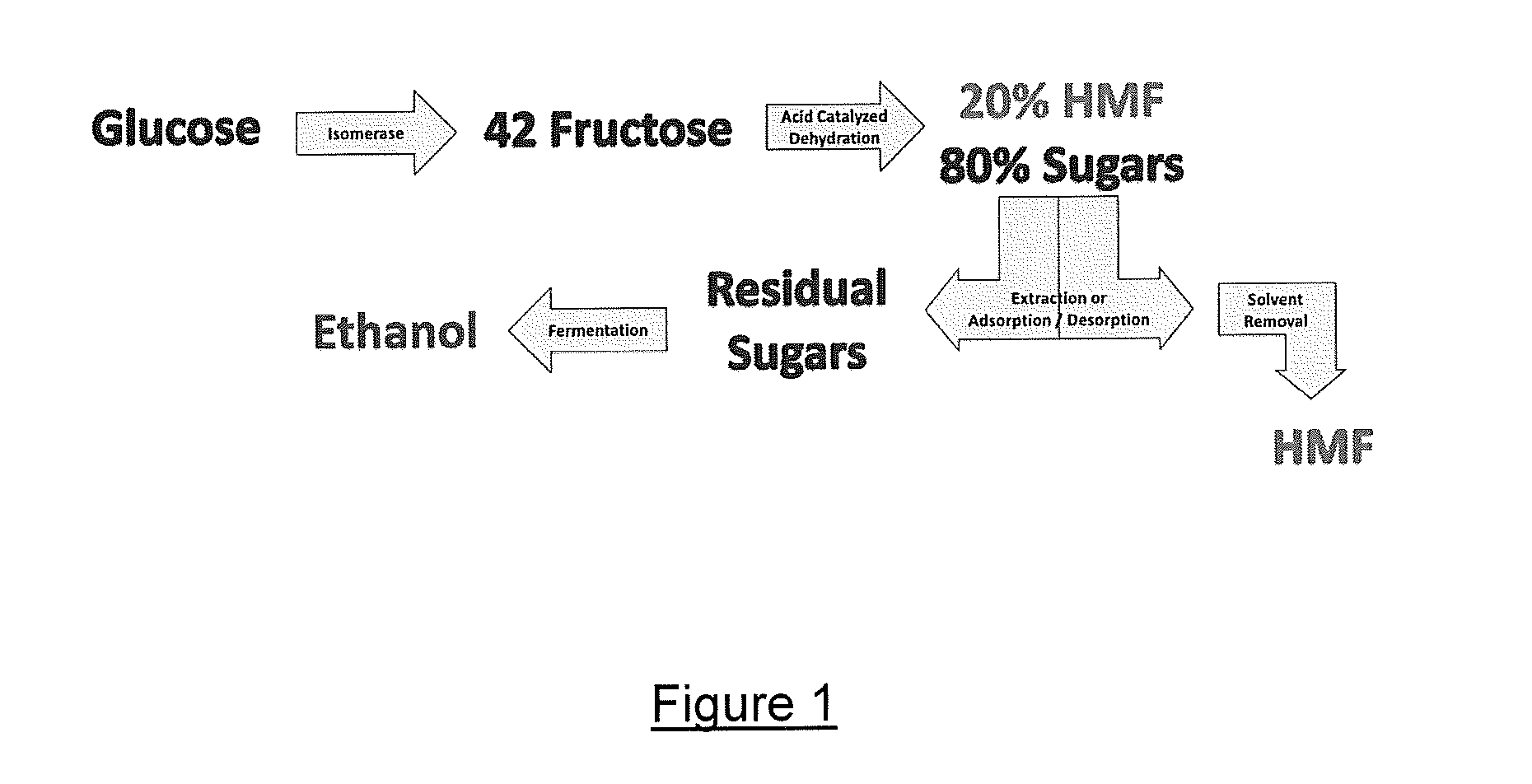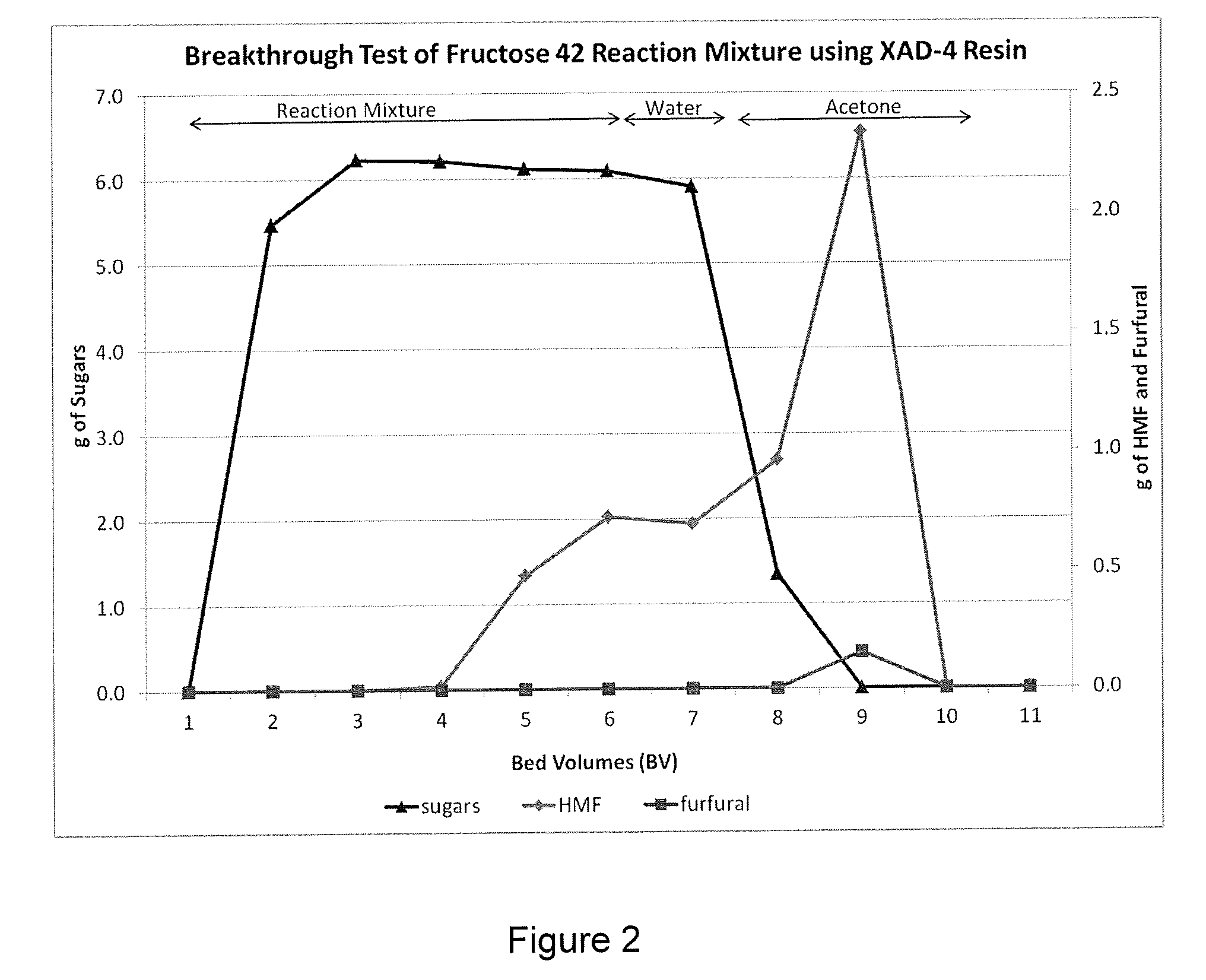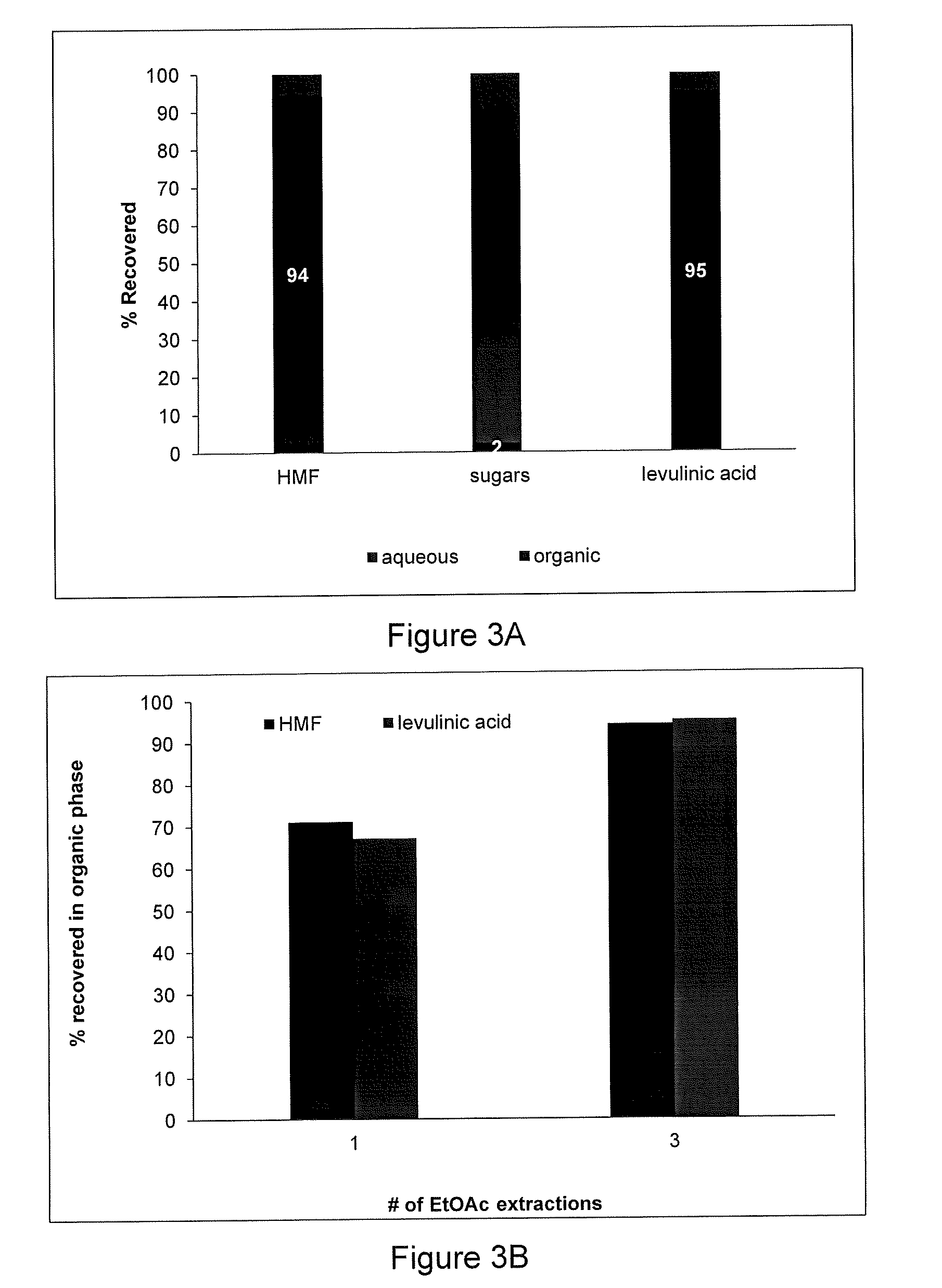Process for making hmf and hmf derivatives from sugars, with recovery of unreacted sugars suitable for direct fermentation to ethanol
a technology of hydroxymethylfurfural and sugar, which is applied in the field of making hydroxymethylfurfural and derivatives thereof from sugar, can solve the problems that hmf and/or hmf ether products begin to be cooled preferably limited
- Summary
- Abstract
- Description
- Claims
- Application Information
AI Technical Summary
Benefits of technology
Problems solved by technology
Method used
Image
Examples
examples 27-32
[0054]Based upon the results seen with the bench scale examples, a series of continuous bench scale runs were conducted with the same HFCS 42 feedstock. For these examples, a 15% dry solids solution with 0.5% sulfuric acid by the total sugars weight was passed through a heated stainless steel coil ( 1 / 16″ tubing, 222 cm in length) maintained at a selected temperature ranging from 185 degrees to 205 degrees Celsius, at flow-through times ranging from about 2.7 to about 4.0 minutes. The backpressure of the system was maintained at 40-70 bar through the use of a backpressure regulator obtained from Upchurch Scientific. Products were then flowed through a cooling coil (stainless steel, 1 / 16″ tubing), collected, and analyzed by HPLC methods, with the results shown in Table 2: No clogging of the system was observed, suggesting little formation of insoluble polymers or of humins.
TABLE 2Conditions and product yields, continuous conversion of HFCS 42 syrup.selectivity% molar yield from sugar...
examples 33-34
[0055]An aggregate sample of all of the products obtained from Examples 27-32—corresponding to an average retention or flow-through time of 4.00 minutes at 205 degrees Celsius—was treated with an adsorbent resin, DOWEX™ OPTIPORE™ V493 general purpose, highly cross-linked styrene-divinylbenzene macroporous resin (CAS 69011-14-9, The Dow Chemical Company, Midland, Mich.) at 30 percent by weight of resin of the whole. The combination was stirred at 40 degrees Celsius using an oil bath for 2 hours, then vacuum filtered to separate the resin and a light yellow filtrate. About 100 grams of ethanol was added to the wet resin, and the combination was again stirred using an oil bath at 35 degrees Celsius for an additional two hours before undergoing a second vacuum filtration to provide the resin and a maroon filtrate. An additional 50 mL of acetone was then added to the wet resin, the combination was stirred at room temperature for an additional two hours and then the combination was vacuum...
examples 35-37
[0058]Two other aggregate samples of all of the products obtained from Examples 27-32 were separated into HMF and residual sugar products by adsorption / desorption with DOWEX™ OPTIPORE™ V493 general purpose, highly cross-linked styrene-divinylbenzene macroporous resin and with using ethanol for desorption of the adsorbed HMF (no acetone for entries 1 and 2 of Table 3), while a third aggregate sample was three-times solvent extracted with ethyl acetate (entry 3). The compositions of the recovered residual sugar products from the three samples are shown in Table 3 as follows:
TABLE 3Chemical composition of the sugars obtained following separation of HMF.Concentration(wt %)Entry PurificationGlu-Fruc-Levo-OtherFur-Lev.#MethodcosetoseglucosansugarsHMFfuralAcid1Adsorption7.153.880.220.780.500.000.012Adsorption7.281.72nd0.920.750.000.263Extraction7.971.93nd1.240.400.000.01nd = not detected.
[0059]These three sugar fractions were forwarded for fermentation with saccharomyces cerevisiae. Ethano...
PUM
| Property | Measurement | Unit |
|---|---|---|
| reaction temperature | aaaaa | aaaaa |
| temperature | aaaaa | aaaaa |
| particle size | aaaaa | aaaaa |
Abstract
Description
Claims
Application Information
 Login to View More
Login to View More - R&D
- Intellectual Property
- Life Sciences
- Materials
- Tech Scout
- Unparalleled Data Quality
- Higher Quality Content
- 60% Fewer Hallucinations
Browse by: Latest US Patents, China's latest patents, Technical Efficacy Thesaurus, Application Domain, Technology Topic, Popular Technical Reports.
© 2025 PatSnap. All rights reserved.Legal|Privacy policy|Modern Slavery Act Transparency Statement|Sitemap|About US| Contact US: help@patsnap.com



